Guest Post: The West Bank – Photo Story Of Palestinian Lives Under Israeli Occupation Before And Since 7th October
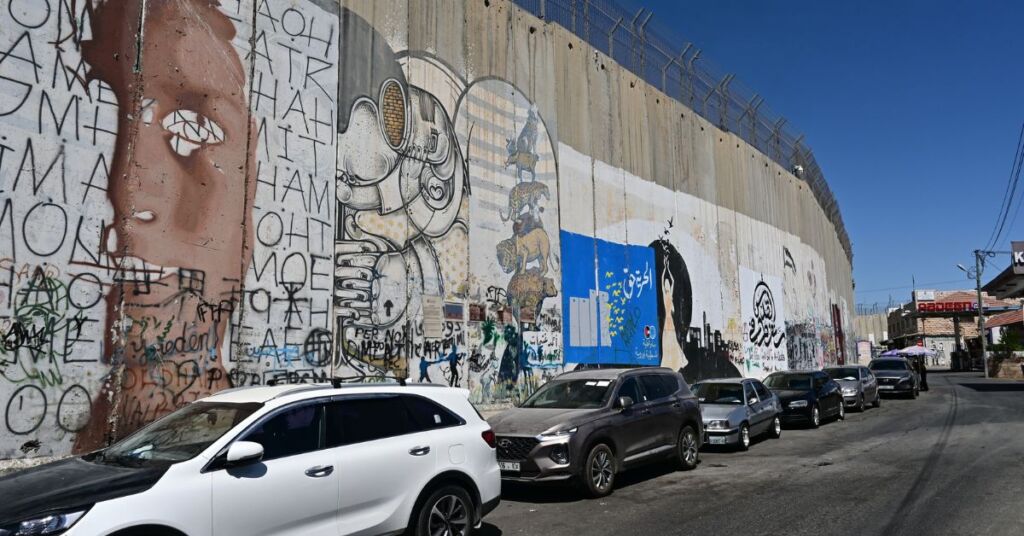
Cover image: The Apartheid Wall, built by Israel that separates the West Bank from East Jerusalem and the rest of Historic Palestine.
This is the first of a two-part guest post
The events on 7th October and Israel’s subsequent genocide of Palestinians in Gaza has shed light on the Palestinian struggle under Israeli occupation, however, for Palestinians, the destruction of their culture and the ethnic cleansing they’ve been subjected to started a long time ago, when in 1917 the British Empire (back then it occupied Palestine), without their consent, declared its pledge to create a nation for the Jews in historic Palestine.
This led to its partition and the events of 1948, what Palestinians know as the Nakba, which translates to catastrophe. The Nakba led to Israel capturing 78% of historic Palestine (with the remaining 22% becoming the present-day West Bank, East Jerusalem, and Gaza), the killing of around 15,000 Palestinians and the forced displacement of around 750,000 Palestinians, all of whom still have not been given their right of return to their homeland.
Many of the displaced and ethnically cleansed Palestinians in 1948 became and still are refugees, along with their children and their children’s children.
This is why there are Palestinian refugee camps scattered all over Jordan and other countries neighbouring historic Palestine, like Syria. At the same time, many Palestinians became refugees in what is now the Occupied West Bank, which makes them refugees in their own land.
Having been in Jordan since August 2023, I’ve been touched directly by the Palestinian struggle in two ways. Firstly, a huge majority of the population of Amman (Jordan’s capital) is originally from Palestine. Many of my friends here have shared with me their grandparents’ stories of how they were forcefully displaced from their homes in cities like Jaffa (Yafa in Arabic) in historic Palestine, which now form part of Israel. Most of these historical Palestinian houses have either been demolished or occupied by Israelis until this very day.
For more information on this specific topic, you can take a look at the photo article More than meets the eye: a photo story of Palestinian and Arab lives, history and heritage in Jerusalem and Israel I wrote for The Perspective UPF Lund.
Secondly, last September I had the opportunity to cross from Jordan to the Occupied Palestinian West Bank. I was there for two weeks. While there, I spent many days in Al-Arroub refugee camp, where a close Palestinian friend of mine lives. I also had the opportunity to visit cities directly affected by the occupation like Al-Khalil (Hebron) and other villages in the Palestinian West Bank as well as observe a multitude of Israeli settlements and Palestinian farmland recently stolen by the Israeli forces for the ever-increasing Israeli settlers.
I saw how the occupation looms heavily on every single aspect of Palestinian life, from checkpoints, to control towers, to areas A, B, and C, and most of all, people’s daily struggles. I also crossed the apartheid wall that separates Al-Quds (Jerusalem) and the rest of historic Palestine from the West Bank in order to visit the Holy City and some cities in what is now Israel, in order to get a better perspective of the contrast from one side to the other.
Anyone who visits Israel and doesn’t go to the West Bank or speak to Palestinians cannot grasp the full picture and scale of the occupation, especially since the occupation is masked and hidden away in cities like Tel Aviv.
That is why I took my camera with me and did my best to photograph what I saw as well as speak to different Palestinians and hear their stories. I returned back to Jordan around a week before 7th October, so I could see the state of the Occupied West Bank before 7th October as well as keep up with what is going on there till this very day through my friends and contacts.
With this photo article, I aim to showcase the extent of the Israeli Occupation of Palestine in the West Bank as well as the daily lives of Palestinians, before and since 7th October, through my photographs and the stories I’ve been able to gather while there and in the last six months.

A checkpoint in Al-Khalil (Hebron), which separates the city from the occupied neighbourhood
The current panorama in the West Bank told from the perspective of a Palestinian.
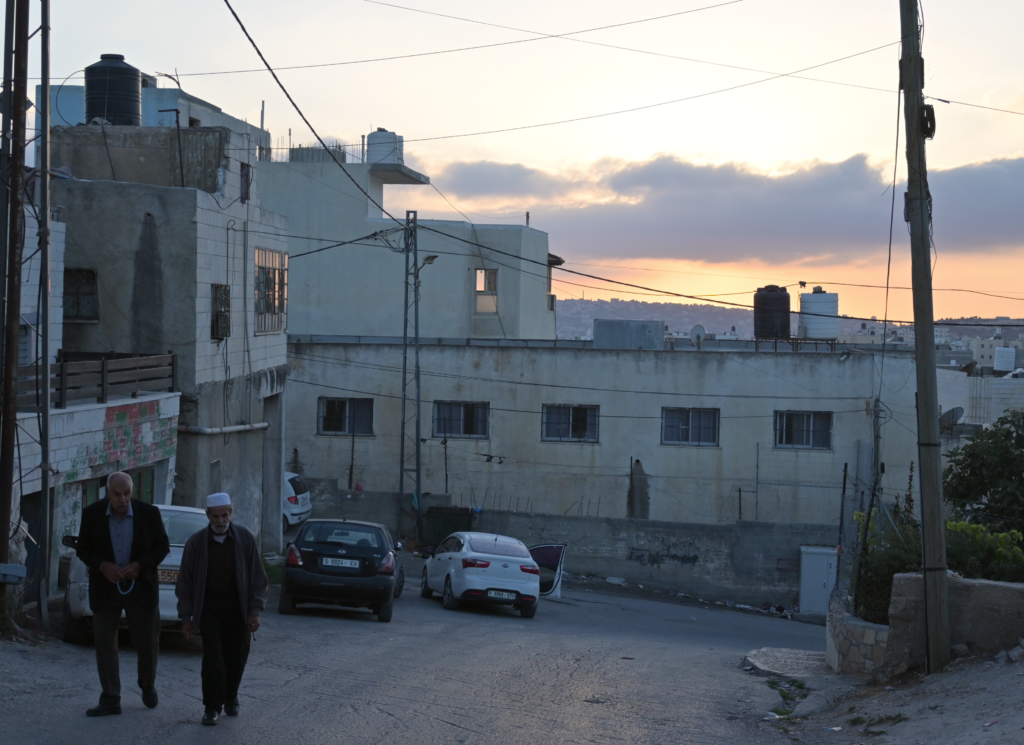
The village Bayt Fajjar

The village Bayt Fajjar
While speaking on a video call with my friend Yousef (name changed upon his request), who’s lived all his life in a refugee camp in the West Bank, he explained how the situation in the West Bank has always been dire, but right now it is the worst it has ever been, even worse than the first and second Intifada.
Since 7th October, all the gates in the main entrances to villages and refugee camps have been closed off by the Israeli forces, limiting the ability of Palestinians to move in and out. People try going through alternative paths in the mountains to get to the cities to do essential tasks, like withdrawing money or getting medical supplies. These ways are not suitable for normal cars since the terrain is not as accessible.
In contrast, Israeli settlers in the West Bank can move freely in and out of their settlements and cross the apartheid wall. In the present day, many have been armed by the Israeli Authorities. This has made it extremely dangerous for Palestinians to drive through the same ways settlers do. Due to this, you will see very few Palestinians on the road, since their cars are marked by a colour-coded number plate in order to distinguish them from settlers’ cars.
When Palestinians have to cross through these areas they try going in groups of five cars cars since they’re terrified of going alone, due to the high risk of being attacked and killed by the Israeli forces or even settlers, without any provocation. The Israeli settlers’ hatred towards Palestinians has increased exponentially, with the number of Israelis killing Palestinians in the West Bank since 7th October, exceeding 450 (including over 110 children) at the time of writing.
Yousef expressed how every time he leaves his house he’s afraid he won’t return home. He can’t do anything outside the refugee camp, which already suffers a lot since it falls under area C (Israeli control), according to the Oslo Accords.
Soldiers break into homes every night and detain children and youth on a regular basis; they did with his nephews.
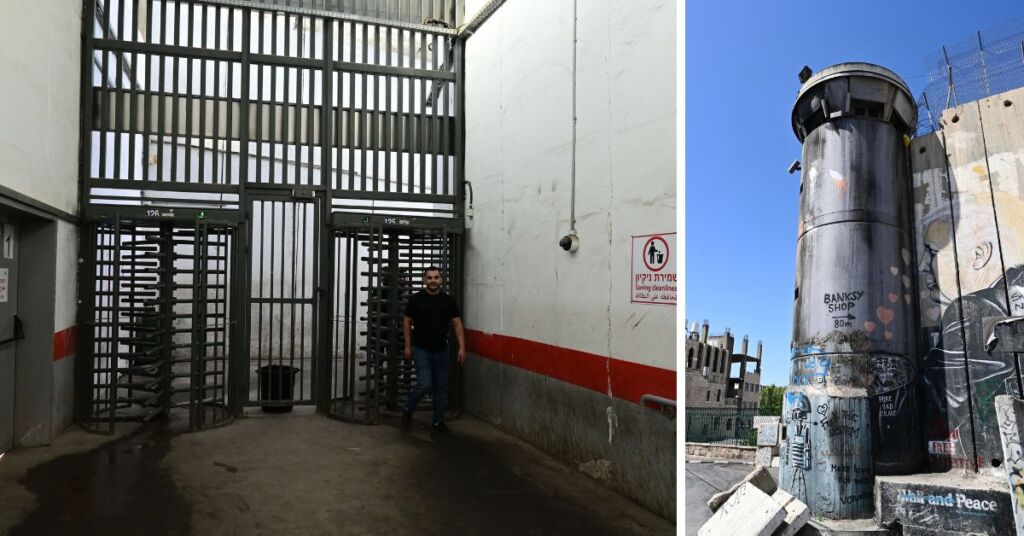
The Apartheid Wall
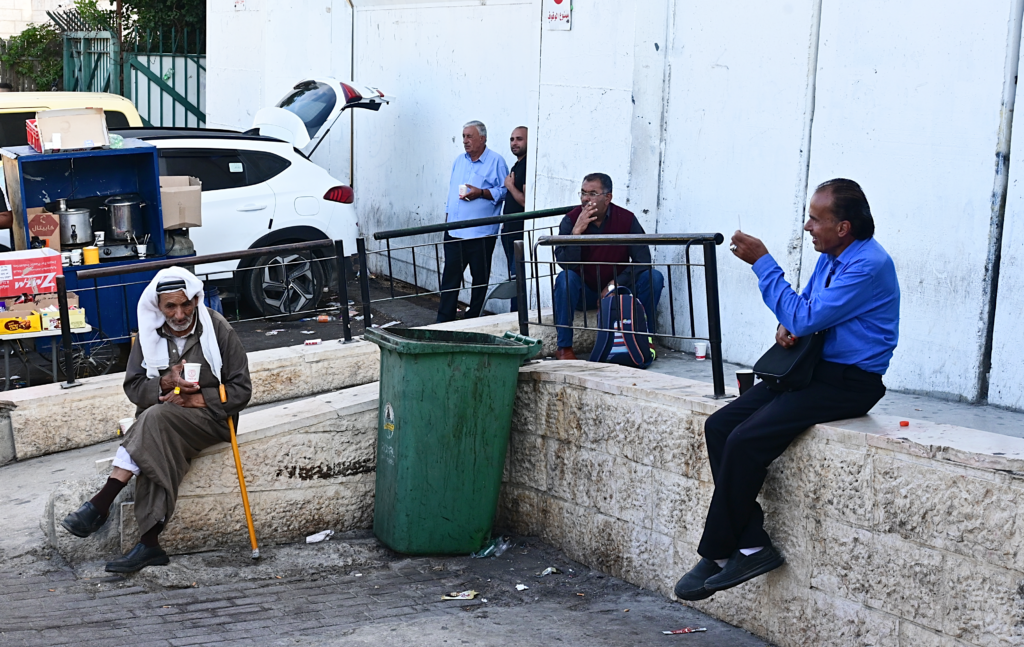
The Apartheid Wall

The Apartheid Wall

The Apartheid Wall

The Apartheid Wall
Yousef is a professor at Al-Quds University (University of Jerusalem), in Abu Deis in the Occupied West Bank. Since 7th October, he hasn’t set foot at the university and has been giving all lectures online, due to roads being closed off, the dangers of travelling from his refugee camp to the university as well as a curfew that the Israeli forces have imposed on Palestinians. Movement around the West Bank for Palestinians has been made impossible.
Israeli checkpoints in highways (there are Israeli checkpoints scattered all over the West Bank), like the one in Wadi an-Nar, which connects the North of the West Bank with the South, are often closed for many hours, in order to discourage movement from the North to the South and further separate Palestinians.
A few days ago the Israeli forces closed the border crossing from the Occupied West Bank to Jordan and blocked Ariha (Jericho) due to a shooting. Yousef was trying to cross over to Jordan that day. In the end, he couldn’t and remained blocked in Ariha for hours, since the Israeli forces blockaded all the roads as a form of collective punishment. He added that this is not new, it’s been his day-to-day life since he was born in Occupied Palestine.
Israel is constantly giving permits for new settlements, all on lands that belong to Palestinians. Palestinians don’t have any finances left to buy their necessities since most have lost their jobs. Most Palestinians were working in construction on the Israeli side, on the other side of the apartheid wall. They haven’t been able to cross since 7th October.
Anyone who protests or speaks up is directly targeted by the Israeli forces, like Abu Yaman, a Palestinian shepherd from the village of Al-Masara. He is a member of the Popular Movement for Non-Violent Resistance. He, along with his sons, have been arrested by the IDF on multiple occasions at times imprisoned for years for protesting peacefully against the occupation. The Israeli forces have seized part of his land, which he used for his livestock.

Abu Yaman
Currently, the situation in the North of the West Bank is where it is at its most dire. The Israeli forces have invaded Jenin refugee camp and Tulkarem on multiple occasions. In fact, when I was there (I was in the south) there were already attacks in Jenin.
Being in Jordan, all one can do is look at the land of Palestine, seeing how the sun sets over a land and a people that have been suffering for generations. Over two million Palestinians reside in Jordan and many do not have the right to return to their land. How must Palestinians who can see their land and not be able to step foot on it feel? The collective pain of the Palestinian community has endured generations of forced displacement, occupation, and suffering.
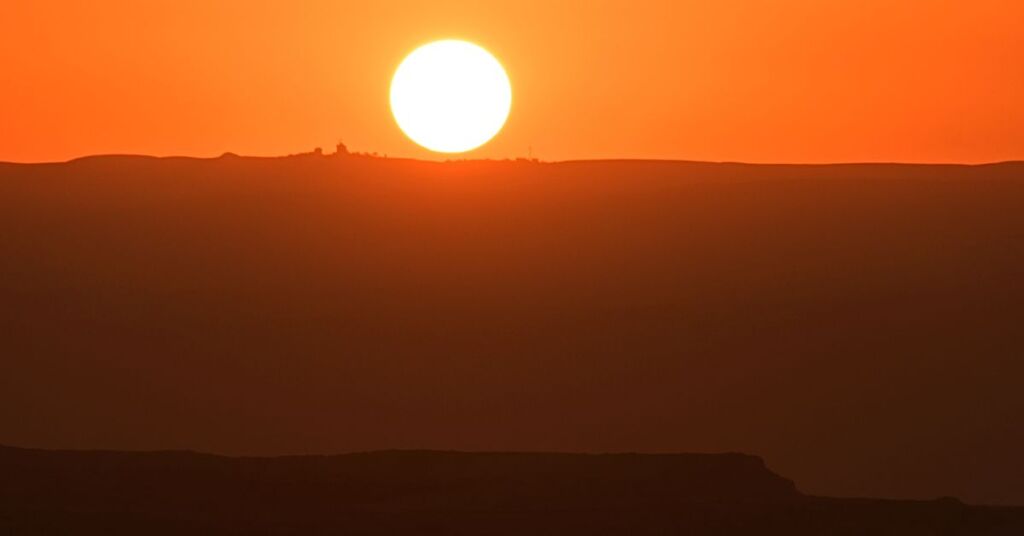
Sunset over Palestine and the Dead Sea seen from Jordan
Part two will be out in the coming days.
Lovin Malta is open to interesting, compelling guest posts from third parties. These opinion pieces do not necessarily reflect the views of the company. Submit your piece at [email protected]
